Do bees move eggs?
Synopsis: How do eggs appear in places the queen cannot reach? Do these eggs produce worker or drone brood? If bees can move eggs, can they move them to queen cells?
Introduction
There was a lot of interest in the post last week, and I’d like to thank readers who commented or contacted me directly {{1}}. Further posts on the topic will appear before queen rearing starts in earnest (or at least here in Scotland 😉 ).
In the studies I described last week, the queen was trapped on a specially modified frame behind a queen excluder.
Perhaps more correctly in this instance it should be called a queen includer as it prevented the queen moving elsewhere in the hive.
Consequently, we can be certain that it was the queen that laid the eggs on the modified frame.
Or can we?
Yes, we can {{2}}.
In the specific studies described last week, the eggs hatched, the larvae developed, pupated and emerged as new queens. With one exception (Apis mellifera capensis – see below), worker bees cannot produce female progeny … and the resulting queens I described last week were definitely female.
However, in analogous circumstances, there are situations in which eggs appear in locations that the queen cannot reach.
How do the eggs get there?
Apis mellifera capensis
Let’s briefly deal with that exception first. The Cape honey bee (Apis mellifera capensis or, for convenience, Capensis) from South Africa.
Unusually, Capensis workers can lay unfertilised eggs which develop into diploid female workers. Within a colony, up to 50% of the Capensis workers can lay eggs, and this has profound implications for honey bee biology. For example, these eggs can also be reared as new queens.
The production of female diploid progeny from unfertilised worker eggs occurs by a process termed thelytokous parthenogenesis {{3}}. There is some suggestion this evolved in Capensis to compensate for the high loss of queens on mating flights in the – famously windy – Western Cape region of South Africa.
Without these worker-laying workers, or more correctly, diploid female laying workers, a colony that lost a virgin queen on a mating flight would be doomed.
Thelytokous parthenogenesis allows the rescue of an otherwise terminally-queenless colony.
Whilst I’m sure some readers are wishing their bees had the same ‘get out of jail free’ trick, and others are wondering why the trait isn’t present in all strains of Apis mellifera {{4}}, I’m going to move swiftly on as I risk disappearing down a rabbit hole of kin selection, social parasitism and gene GB45239 which – alone – accounts for the thelytokous phenotype.
Worker laying workers
If you’ve kept bees for more than a few years you are probably familiar with the frustrating issue of laying workers. In contrast to the Capensis worker-laying workers described above, normal laying workers lay unfertilised eggs which go on to develop into haploid drones.
All colonies contain a low proportion of laying workers … they account for perhaps 0.01% of the worker population. Visscher (1996) demonstrated that ~7% of the unfertilised (male) eggs in a colony were laid by workers, not the queen. However, analysis of the adult drone population (in a queenright colony) showed that only 1 in 1000 (0.1%) were worker-derived.
These observations tell us two things of relevance to the topic of whether bees move eggs:
- some eggs produced in a colony are laid by workers, not by the queen
- the vast majority of worker-laid eggs are removed, or at least do not develop into adult drones
Studies dating back to the late 80’s determined that workers cannot discriminate between larvae produced from eggs laid by queens and those from eggs laid by workers. This and other evidence supports the existence of a policing mechanism – termed worker policing – in which eggs not laid by a queen are removed (and usually devoured) by workers.
Worker policing explains the very small numbers of drones that originate from eggs laid by workers. I’ll discuss the mechanism by which workers differentiate between queen- and worker-laid eggs at some other time, but it will be a surprise to absolutely no-one that it involves queen pheromones.
Eggs in weird places
Queens are creatures of habit. They are rarely found away from the brood nest. If you find a queen scuttling around on frames of stores on the periphery of the brood nest you can be pretty certain that you’ve disturbed her by over-smoking the colony, or by being a bit hamfisted when removing or returning frames during an inspection.
Slow down … remember, more haste less speed.
On good comb – by which I mean evenly drawn comb not already part-filled with nectar or pollen – queens tend to lay in concentric circles, producing rings of similarly-aged eggs, larvae and pupae. Conversely, they tend not to lay individual eggs at the extreme periphery of the brood nest, or in frames otherwise filled with stores.
And they really struggle to lay above the queen excluder.
So why is it not unusual to find eggs, larvae or pupae in super frames?
Almost any time I extract more than a half-dozen supers I expect to find one or two pupae there. If these are drone pupae – like the fellow above – then the obvious explanation is that it’s an egg from a laying worker that escaped worker policing.
However, formally it could be a drone egg moved up by a worker from the brood nest into the super.
Drone pupae are easy to explain.
In contrast, eggs, or worker pupae or occupied queen cells are either uninterpretable, or require a better explanation. And, on occasions, you can find these in the supers as well.
Anecdotal reports
There are reports going back at least to the beginning of the 19th Century on eggs appearing in locations where the queen has no access. It’s worth remembering that these reports pre-date any understanding of worker policing, though laying workers had already been ‘observed’ and described by Francis Huber {{5}}.
An article in Bee World from 1936 describes eggs appearing in comb out of reach of a queen; for example, in a hive in which the queen is tethered to a particular patch of comb (see also the experiments by Butler below), or in frames adjacent to a queen trapped in a cage. Several of these reports also describe bees carrying eggs.
However, most of these largely anecdotal reports {{6}} involve worker brood, and many do not demonstrate the eventual emergence of the workers.
The author of the Bee World article even suggests that some eggs at the periphery could be delayed in hatching due to their being in a cool part of the comb. That’s an interesting suggestion and not something I know much about. I know it’s possible to send eggs by post and presume the lowered temperatures there similarly delays hatching.
Much more interesting than moving eggs to rear worker brood is the possibility that workers might move eggs into recently produced queen cells. Fortunately, there are some scientific studies done in this area which help address the original question of whether bees move eggs.
Scientific studies of the origins of eggs in queen cells
In a queenright colony, the queen goes about her business laying eggs in worker and drone comb.
If the colony is overcrowded and making swarm preparations, it is presumed that the queen – encountering a queen cup {{7}} in her travels – also lays an egg in the queen cup. Several reports describe this happening in studies using observation hives.
Supersedure
If the queen is failing, through injury or old age, the colony may try and supersede her.
Colin Butler (1957) reasoned that both injury or old age could restrict the mobility of the queen, and that either of these could induce supersedure.
Butler therefore investigated the production of queen cells in a colony in which the queen was tethered by a very thin wire looped around her petiole (the narrow waist that characterises member of the Hymenoptera).
This tethering prevented the queen from laying in cells, though she could still drop occasional eggs on the surface or rim of the drawn comb. Butler provisioned the hives containing the tethered queen with frames of young larvae from which they were expected to rear supersedure queens (if, that is, restricted mobility did indeed induce supersedure).
Seventeen of 42 colonies containing tethered queens produced queen cells; 12 of these 17 were classic emergency cells, with the cell being drawn from worker comb. However, the remaining 5 colonies had queen cups containing eggs.
Since the queen could not reach the queen cups (due to her being tethered) the eggs must have been placed in the cups by workers.
Were they laid in the queen cups by laying workers, or were they eggs laid or dropped by the queen and moved to the cups by workers?
Butler suggests the latter, stating that there was no evidence of laying worker activity in the hives (and ample open brood should suppress this activity anyway).
However, unfortunately we’ll never know. Not only were the experiments done 70 years ago this summer, but Butler didn’t let the eggs hatch, develop and emerge. The tethered queens were released soon after queen cells were produced, and all colonies tore down the queen cells.
The emergency response
If the queen is killed or removed from the colony, the ‘emergency response’ results in workers rearing one or more replacement queens from eggs or very young larvae.
Queen rearing under the emergency response is relatively easy to study. It is also the basis of the majority of queen rearing methods used by beekeepers.
There are two related studies by Mark Winston (like Butler and Huber, another of the outstanding honey bee researchers upon whose studies a lot of our currently understanding of honey bee biology is based) that are relevant to the question “Do bees move eggs?”
These papers (Winston, 1979 and Punnett & Winston, 1983) deserve a full post of their own as they are laden with interesting observations of what happens when the queen is removed from a colony. This is relevant to practical beekeeping … what do you think happens when you conduct a split, leaving one half suddenly queenless?
The 1979 paper was on Africanised bees, the later one on European honey bees. In both studies, colonies were de-queened and inspected on a daily basis for the location, origin and timing of queen cell production. The age of eggs or larvae selected for rearing of queens was determined by ‘counting back’ from the date/time at which any resulting cells were sealed.
Africanised honey bees
Queen cells were produced 1-2 days after de-queening. These queen cells were extended from worker brood comb, but 47% of them (29/62) were unoccupied when first elongated. On subsequent inspection, these cells contained eggs or young larvae, and these eventually developed into queens and emerged.
There are two important conclusions from this study:
- almost 50% of new queen cells in these colonies were populated with eggs or larvae moved there by workers in the queenless colonies
- these eggs/larvae were not due to laying worker activity as they developed into queens, not drones
European honey bees
The 1983 repeat focused on European honey bees. In this instance, all de-queened colonies produced new queen cells within one day of queen removal.
However, in contrast to the study described above, only ~5% (5/118) of these queen cells were empty when first elongated. Although a smaller percentage, the significance is the same:
- the eggs or larvae that were subsequently present in these queen cells must have been moved there by workers in the hive
- they were not laid by laying workers because a) all cells were occupied by larvae within 3 days so must have been laid by the original queen, and b) they subsequently developed into viable queens and emerged
I’m not sure why there was a difference in brood (i.e. eggs or young larvae) movement between the Africanised and European strains of Apis mellifera. However, I’m in good company …
The reasons for these different movement rates are not clear (Punnett & Winston (1983) )
… so let’s not worry about it.
But what about the glue?
When the queen lays an egg, she attaches it to the base of the cell with a glue-like secretion.
Surely, if the egg is moved by a worker they will not be able to reattach it correctly to the base of the next cell?
Well, if humans can do it, I’m pretty certain that bees can.
And humans can.
Steve Tarber (1961) described a modified set of forceps that could be used to lift eggs and place them in fresh comb. About 75% of repositioned eggs would subsequently hatch in either a hive or incubator.
The ‘trick’ to the design of the forceps is apparently the presence of ‘flared lips’ {{8}} which avoid contact with the posterior glued end of the egg.
I have absolutely no doubt that a worker bee could achieve a similar or better level of dexterity.
So, do bees move eggs within the colony?
Yes.
As a scientist, I cannot think of explanation – other than worker bees moving eggs about in the hive – for the results presented above.
Ideally, I’d also want to observe bees moving eggs. I’m not aware I’ve ever seen this, though I have seen them eating eggs.
Perhaps I should get my prescription checked for my reading glasses in preparation for the season ahead?
Can bees move eggs between hives?
So, if worker bees can move eggs within a hive, could they move eggs between colonies?
Could a terminally queenless colony be ‘rescued’ by stealing eggs from a neighbouring colony?
Far fetched?
Possibly, but it has been suggested that this occurs.
An egg is smaller than a full pollen basket. I don’t know the density of either pollen or eggs, but I suspect the weight isn’t very different. An egg might mess with the aerodynamics of flight – though remember bees can fly with a radio antenna protruding from the thorax – so I suspect workers could transport eggs between nests.
Do they?
I doubt it.
CHCs and kin selection
To collect the egg, they’d have to run the gauntlet of the guard bees in the ‘donor’ nest, and then negotiate their way into the centre of the brood nest to select an egg. There are a lot of bees in the way, and the cuticular hydrocarbons (CHCs) on the ‘thief’ from the (presumably) queenless colony would make her ‘smell’ completely different.
I’m sure she’d be repulsed, or worse, pretty quickly.
Robbing bees usually succeed when they overwhelm the defences of a weakened colony. That’s a very different situation from a single worker making a daring ‘smash and grab’ raid on a strong hive.
Furthermore, I cannot see this behaviour evolving for two reasons:
- a ‘stolen’ queen would be unrelated to the robbing worker; from kin selection theory there would be little or no selective pressure for the trait
- for a similar reason, if the trait did evolve it would be ‘lost’ as soon as the stolen queen replaced all the bees in the hive.
As always, Occam’s razor applies … the simplest explanation is usually the correct one.
Rather than predicting the evolutionarily, kleptobiotically {{9}} and potentially aerodynamically unlikely theft of an egg from a neighbouring colony, my guess is that a queen cell appearing in a terminally queenless hive would contain a drone pupa from an egg laid by a laying worker.
Practical beekeeping
Are there any implications for beekeeping?
Probably none.
If it happens between worker cells then who cares? It’s just one of those thousands of hidden events that go on undetected or unsuspected in the colony every day.
If it involves transfer of a worker egg to a queen cup, and the resulting queen goes on to head a colony which produces 60 kg of honey next season, then – again – who cares?
But what are the implications for the maternal effect I discussed last week? If eggs can be moved into queen cups by workers then at least some queens may result from eggs selected by workers.
In that case, there will be no ‘maternal effect’ … unless the worker bees know which eggs to transfer.
And I wouldn’t rule that out {{10}}.
Notes
I posed the following paraphrased question in the introduction:
Can we be sure that the caged queens used in the Wei et al., (2019) study – see the post last week for the reference – laid the eggs in the queen cups in the modified frame under the queen includer?
Despite re-reading the paper several times, I cannot work out whether the other frames in the hive may have contained eggs during the 6 hour period when the queen was caged.
If they did, how can we be certain that the eggs that subsequently appeared in the plastic queen cups had not been transferred there by workers? Perhaps not all of them, but at least some of them?
This would fundamentally change the interpretation of their results, and would mean that it was the workers that could discriminate between lighter and heavier eggs.
Which, of course, they can 😉 .
References
Do Bees Move Eggs? (1936) Bee World 17: 74–74 https://doi.org/10.1080/0005772X.1936.11093524.
Butler, C.G. (1957) The process of queen supersedure in colonies of honeybees (Apis mellifera Linn.). Ins Soc 4: 211–223 https://doi.org/10.1007/BF02222154.
Punnett, E.N., and Winston, M.L. (1983) Events following queen removal in colonies of european-derived honey bee races (Apis mellifera). Ins Soc 30: 376–383 https://doi.org/10.1007/BF02223969.
Taber, S., III (1961) Forceps Design for Transferring Honey Bee Eggs. Journal of Economic Entomology 54: 247–250 https://doi.org/10.1093/jee/54.2.247.
Visscher, P.K. (1996) Reproductive conflict in honey bees: a stalemate of worker egg-laying and policing. Behav Ecol Sociobiol 39: 237–244 https://doi.org/10.1007/s002650050286.
Winston, M.L. (1979) Events following queen removal in colonies of Africanized honeybees in South America. Ins Soc 26: 373–381 https://doi.org/10.1007/BF02223556.
Credits
Image of Apis mellifera capensis by Discott, CC BY-SA 4.0, via Wikimedia Commons.
{{1}}: I’ve held back a couple of comments that I couldn’t respond to without writing an entire follow-up post.
{{2}}: A scintilla of doubt remains … see my note at the end.
{{3}}: Imagine the score for that in Scrabble!
{{4}}: There are compelling reasons why thelytokous parthenogenesis is usually an undesirable trait in honey bees … just be thankful your bees aren’t like Capensis.
{{5}}: ‘Observed’ because Huber was effectively blind but amazingly, with the help of his wife, made some of the most important discoveries about honey bee biology.
{{6}}: Somewhat dismissively I’ve called these anecdotal, largely because they are not scientifically documented, not statistically analysed, not photographed and were reported well before worker policing was known about.
{{7}}: A specific cell drawn by workers for queen development.
{{8}}: Another link between Mick Jagger and bees?
{{9}}: OK, I’ve adjectivised the term kleptobiosis (meaning ‘an association in which a small species feeds on the refuse of a neighbouring nest inhabited by a larger species, or robs returning workers of the host species of the food they are carrying’) which E.O. Wilson used when describing Lestrimelitta, a neotropical stingless bee.
{{10}}: Read on … there’s more!
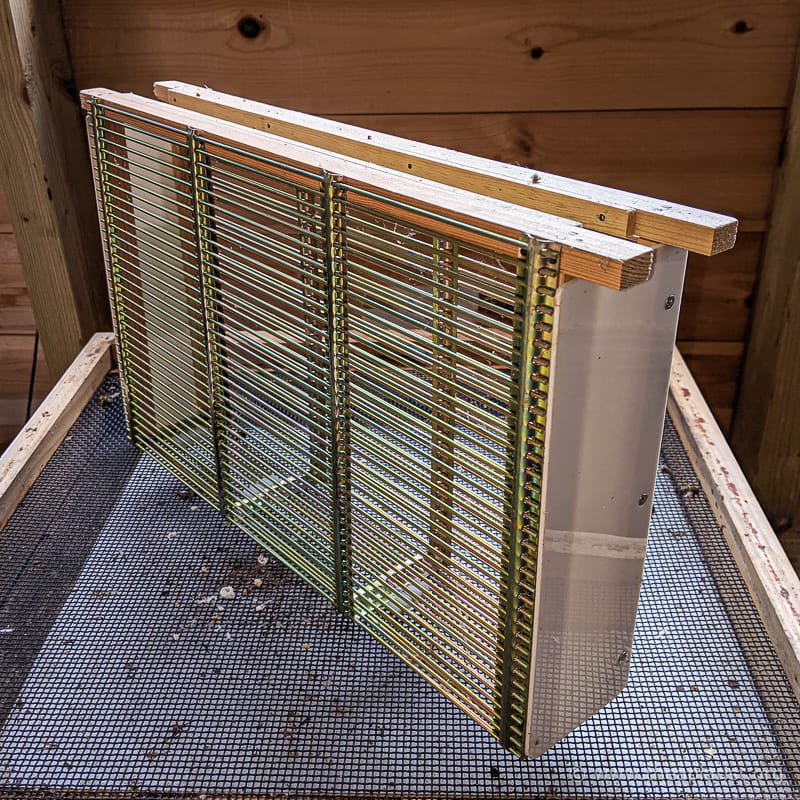
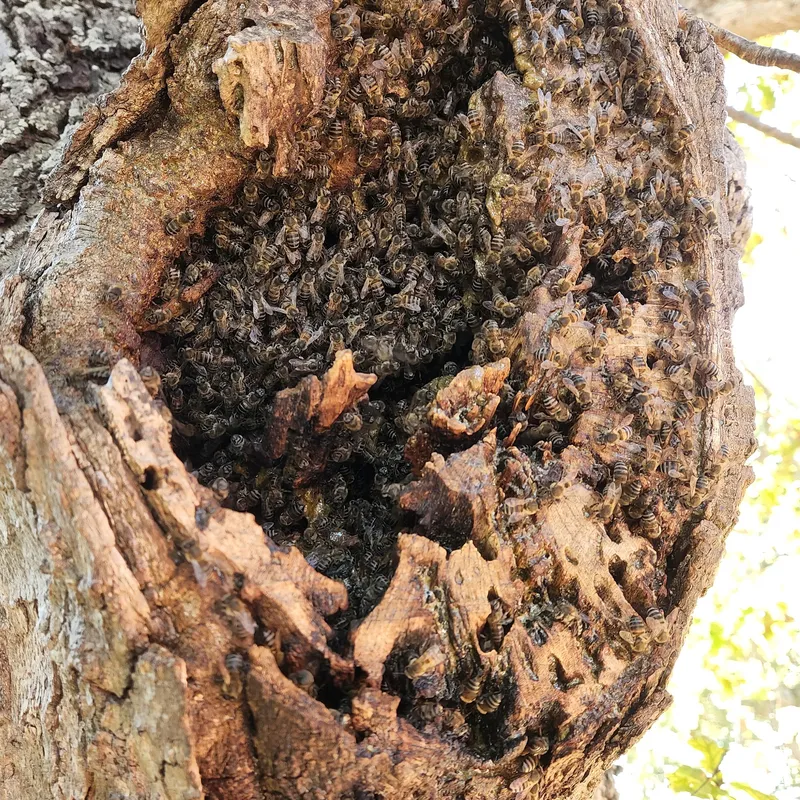
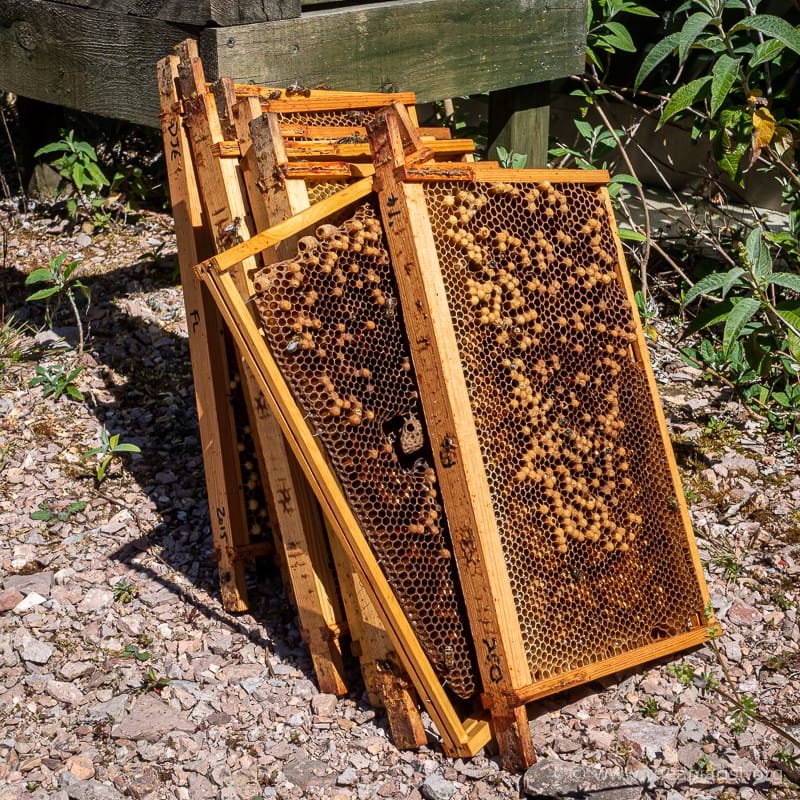
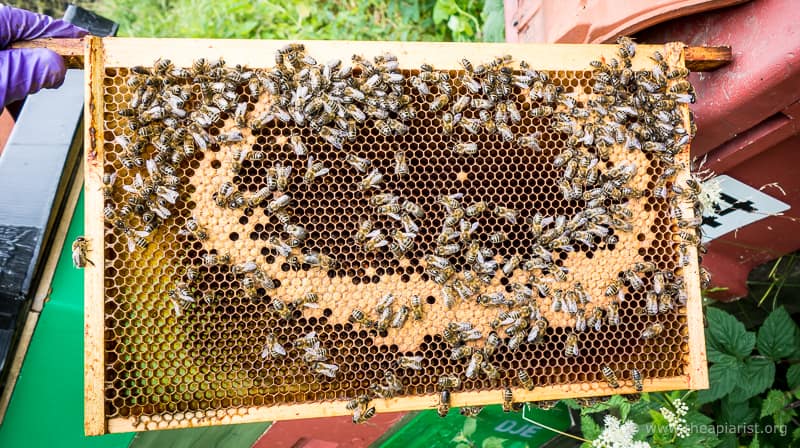
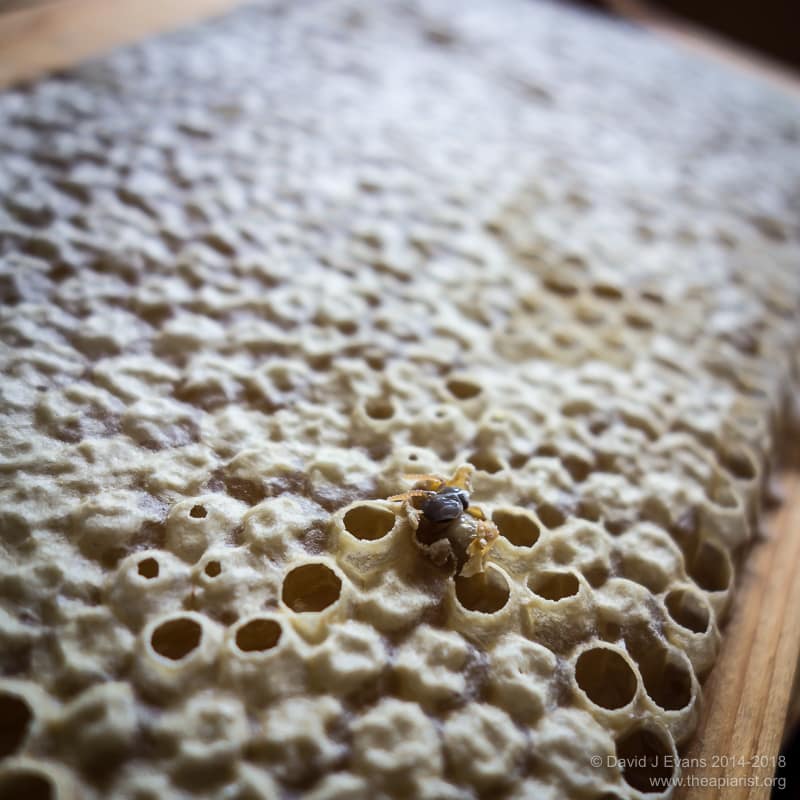
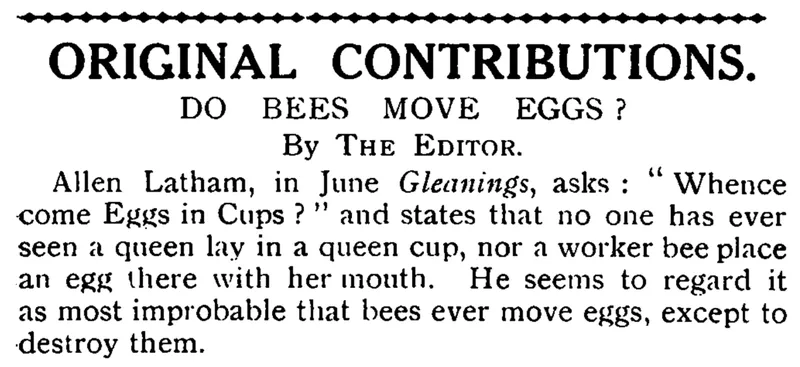
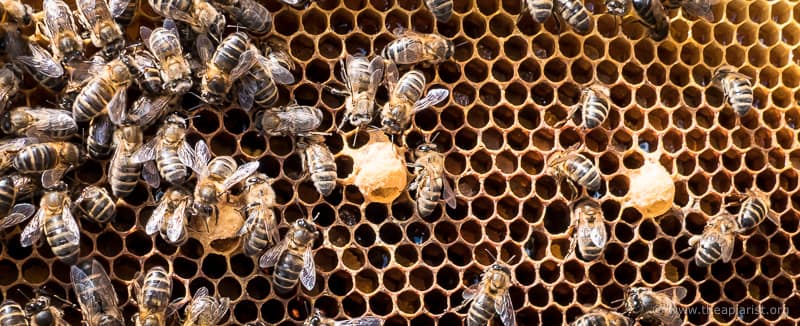
Join the discussion ...